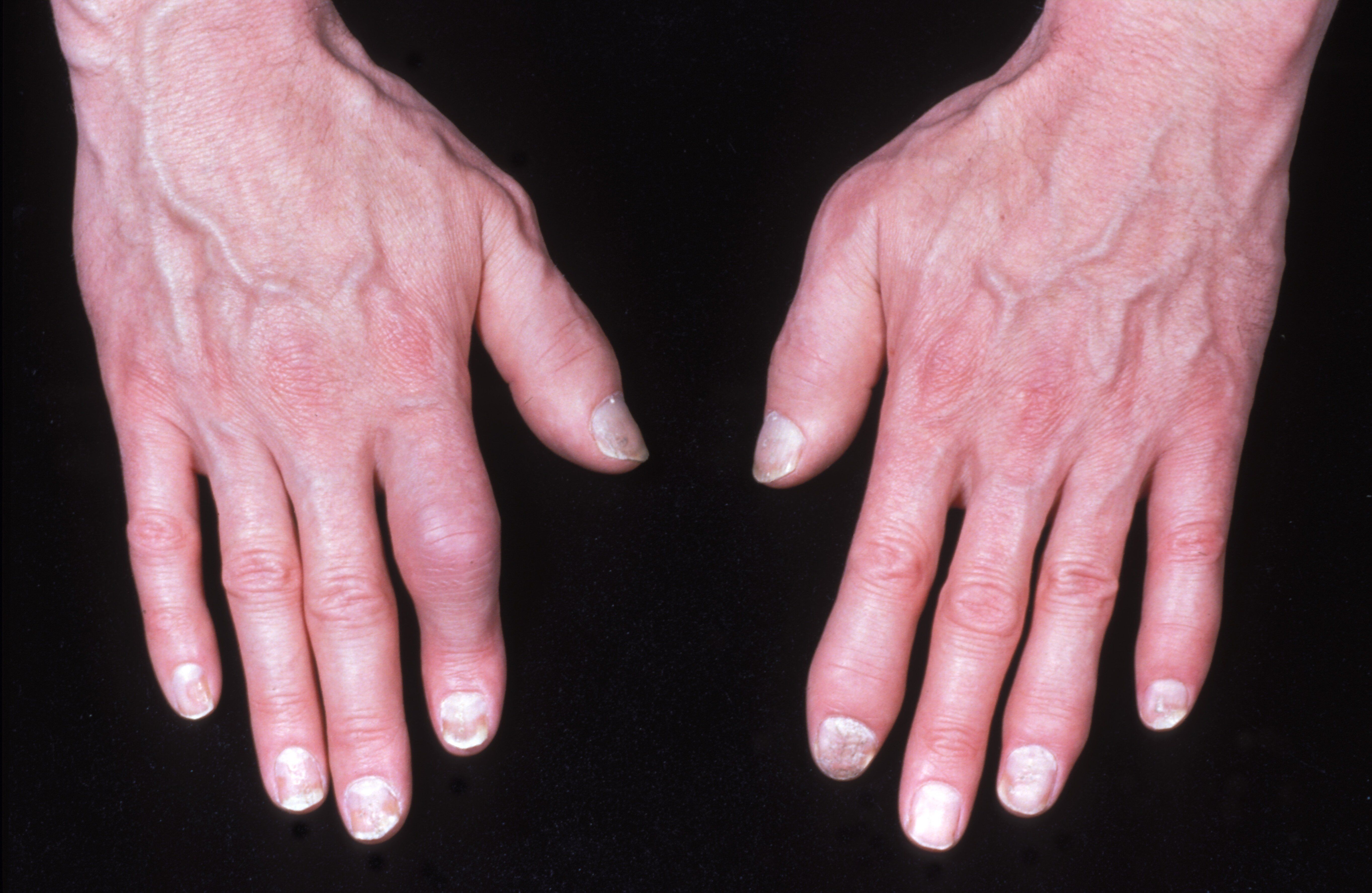Article
Surgery Rate Doubles in Psoriatic Arthritis
Author(s):
Patients with psoriatic arthritis have twice the rate of joint surgery when compared with the general population, with one-third of patients with this condition undergoing joint surgery, say researchers writing in Annals of the Rheumatic Diseases this month.
(©MedicalIllustrations.com)

Patients with psoriatic arthritis have twice the rate of joint surgery when compared with the general population, with one-third of patients with this condition undergoing joint surgery, say researchers writing in Annals of the Rheumatic Diseases this month.
Of patients with psoriatic arthritis, 40 percent to 60 percent will develop erosive arthritis and joint-related surgery may ultimately be necessary for pain relief. While the introduction of biological disease-modifying antirheumatic drugs (bDMARDs) has demonstrated an ability to delay the radiological progression of peripheral arthritis; dactylitis, enthesitis and spondylitis, it is unclear if the introduction of bDMARDS has translated into a reduced need for joint surgery as observed in patients with rheumatoid arthritis. The sparse data on use of joint surgery in psoriatic arthritis warrants a large-scale population-based study.
In this nationwide register-based cohort study, The Danish National Patient Registry was used to investigate time-trends and cumulative incidence of joint surgery among 11,960 psoriatic arthritis patients (mean age 50 years; 57 percent female) compared with the general population from 1996 to 2017. The researches also investigated the cumulative incidence of joint surgery up to 15 years after patients were diagnosed with psoriatic arthritis.
Results showed an almost constant five-year incidence rate in any joint surgery from 1996 to 2012. The trend of surgery was almost similar to that of the general population but with more than twice as high rates among psoriatic arthritis patients at any time point. Among patients with psoriatic arthritis, 2 percent, 10 percent and 29 percent required joint surgery at five, 10 and 15 years after diagnosis.
“The cumulative incidence of surgery was much higher in psoriatic arthritis patients, and almost 30 percent received joint surgery after 15 years of disease duration compared with 15 percent among the general population,” wrote the authors, led by Guldberg-Møller, M.D., of Copenhagen University Hospital in Denmark.
After 15 years of follow-up, the risk of surgery in psoriatic arthritis patients diagnosed at age 18 to 40 years was 22 percent versus 20 percent in the general population aged 60 years or older.
The five-year incidence rates of joint surgery in the Danish psoriatic arthritis population remained high opposed to a decrease in incidence in a Danish rheumatoid arthritis population in the bDMARD era. The authors suggested that this may be because bDMARD therapy has been less aggressively implemented in psoriatic arthritis, while the choice of surgery is decided more on subjective markers of disease that in psoriatic arthritis seem less impacted by the current treatment regimes.
“Clinicians should be aware of high joint related surgical rates in the psoriatic arthritis population and implement a treat-to-target strategy early after diagnosis,” the authors wrote. “Future studies will be needed to identify the impact of biological DMARD treatment on the need for surgery using individual-level based information.
“Surgical rates represent a possible treatment outcome to monitor in future studies,” the authors wrote.
REFERENCE
Jørgen Guldberg-Møller, Rene Lindholm Cordtz, Lars Erik Kristensen, et al. “Incidence and time trends of joint surgery in patients with psoriatic arthritis: a register-based time series and cohort study from Denmark.”Annals of the Rheumatic Diseases October 13, 2019. doi: 10.1136/annrheumdis-2019-215313




